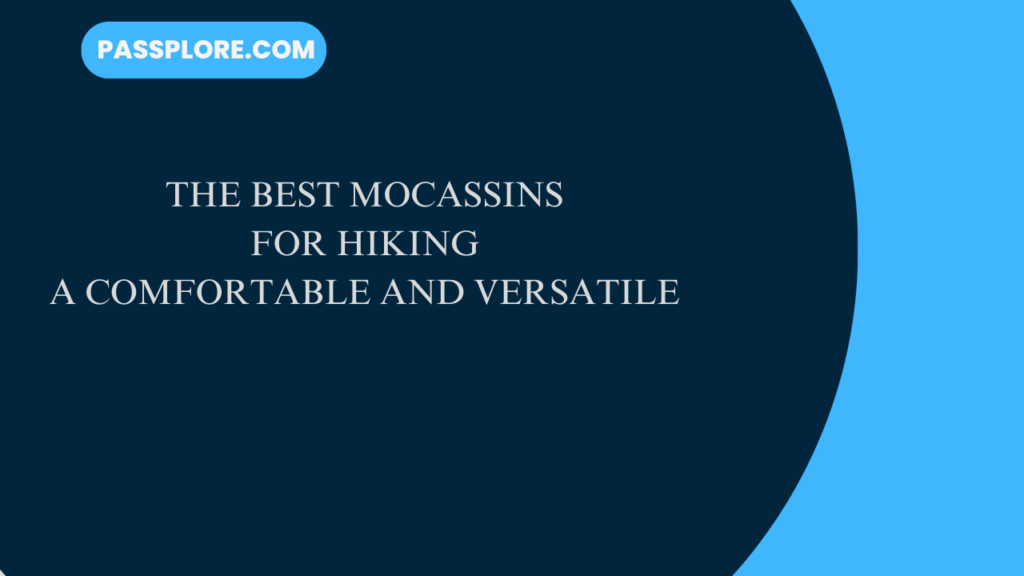In this guide, we’ll explore why moccasins make such a great hiking shoe choice. We’ll cover their unique construction, different types to consider, tips for choosing the right pair, caring for your moccasins, and how they compare to traditional hiking boots. Get ready to experience hiking in supreme comfort!
What are Moccasins?

Moccasins have been around for centuries, originating from Native American tribes. These ultra-lightweight shoes are crafted from soft leathers or suedes shaped into a single piece of footwear. The signature flexible soles allow your feet to move and grip naturally.
Unlike rigid hiking boots, moccasins’ construction promotes airflow and breathability. The minimalist design reduces foot fatigue and offers a close-to-barefoot feel. Outdoor enthusiasts rave about moccasins’ comfort for hiking and camping.
Types of Hiking Moccasins
While the classic moccasin style works well for many hikers, there are also variations designed specifically for hitting the trails:
Leather Moccasins – Made from durable full-grain leathers, these are water-resistant and tough enough to handle rugged terrain. The leather uppers break in beautifully.
Suede Moccasins – The soft napped suede is lighter weight and more breathable than leather, perfect for warm weather hikes. They require more care to keep dry.
Moccasin Boots – These Chelsea-style ankle boots have moccasin-inspired construction with a bit more ankle support and protection ideal for longer hikes.
Waterproof Moccasins – Fully waterproof leather or suede moccasins with waterproof liners or membranes allow you to stay dry even when conditions are wet.
How to Choose the Right Moccasins for Hiking
With so many moccasin styles available, how do you pick the right pair for your hiking needs? Here are some key factors to consider:
Terrain – For relatively smooth, well-maintained trails, almost any moccasin will work great. If you’ll be on rockier, more rugged paths, look for sturdy leather or rubber soles.
Distance – For short day hikes, you can get away with minimalist soft-soled moccasins. Longer multi-day hikes call for moccasin boots or added underfoot cushioning.
Weather – Will you be hiking in dry conditions or expecting rain/snow? Waterproof moccasins are essential if wet weather is in the forecast.
Sizing – Always try moccasins on in-person if possible and go a half-size up if you’ll be wearing thick hiking socks. The toe box should have just a bit of wiggle room.
It’s important to break moccasins in gradually before hitting strenuous trails. Slowly increase wearing time to allow the soft leathers to form to your feet.
Best Moccasin Brands for Hikers
While cultural appropriation of Native designs is a valid concern, some heritage brands have been making authentic moccasins for generations:
Minnetonka Moccasins – This legendary Minnesota company has been handcrafting moccasins using traditional methods since 1946. Their Thunderbird II and El Reno styles are hiking favorites.
Sperry – Best known for their signature boat shoes, Sperry also produces the durable Camp Moc line designed for outdoor adventures on land or water.
L.L. Bean– The iconic Maine brand offers several moccasin styles including the cushioned Wicked Good Slippers perfect for casual hikes and camping.
Outdoor brands have also embraced the moccasin’s natural performance benefits for hikers. Labels like Merrell, Danner, and Twisted X make purpose-built lightweight hiking moccasins.
Caring for Your Hiking Moccasins
With the right care and conditioning, a quality pair of moccasins can last for many seasons of hiking. After each adventure:
– Use a soft brush to remove dried dirt and debris from the shoes
– Treat the leather or suede with a waterproofing spray or conditioning oils to prevent cracking
– Stuffing with newspaper can help retain the moccasin shape as they dry
Replace the soles once they become excessively worn down for better traction. Most cobblers can easily resolve or repair moccasins as needed.
Moccasins vs Traditional Hiking Boots
How do moccasins actually stack up to those burly traditional hiking boots? There are pros and cons to each:
Pros of Moccasins:
– Lightweight and packable for travel
– Superior flexibility and freedom of motion
– Ample breathability to keep feet drier
– Break in quickly for a customized fit
– Versatile enough for hiking, camping, and everyday wear
Pros of Hiking Boots:
– Maximum ankle support and protection
– Stiffer soles with excellent traction on rocky terrain
– Long-lasting, super rugged construction
– Often waterproof right out of the box
For casual day hiking on groomed trails, moccasins can be the superior choice in terms of comfort. But for serious backpackers covering long distances in demanding conditions, hiking boots still have the edge.
Versatility of Moccasins
One of the biggest advantages of moccasins is their versatility that goes far beyond hiking. These ultra-packable slip-ons are perfect for camping, travel, and everyday casual wear.
Toss a pair of moccasins in your bag and you have supremely comfortable slip-on shoes ready for whatever your journey throws your way. Lounge around the campsite, run errands about town, or dress them up a bit – quality moccasins can do it all in style.
Conclusion
There’s a reason why moccasins have remained an outdoor footwear staple for so long. Their signature comfort, flexibility, and breathability make them an absolute joy to wear hiking.
While not ideal for extremely rugged terrain, the right pair of moccasins can tackle all kinds of hiking scenarios with ease. Their versatility also makes them a great all-around shoe choice for travel and everyday wear.
So ditch those stiff boots and slip on some moccasins for your next hiking adventure. Your feet will thank you! Let us know your favorite moccasin hiking stories in the comments below.